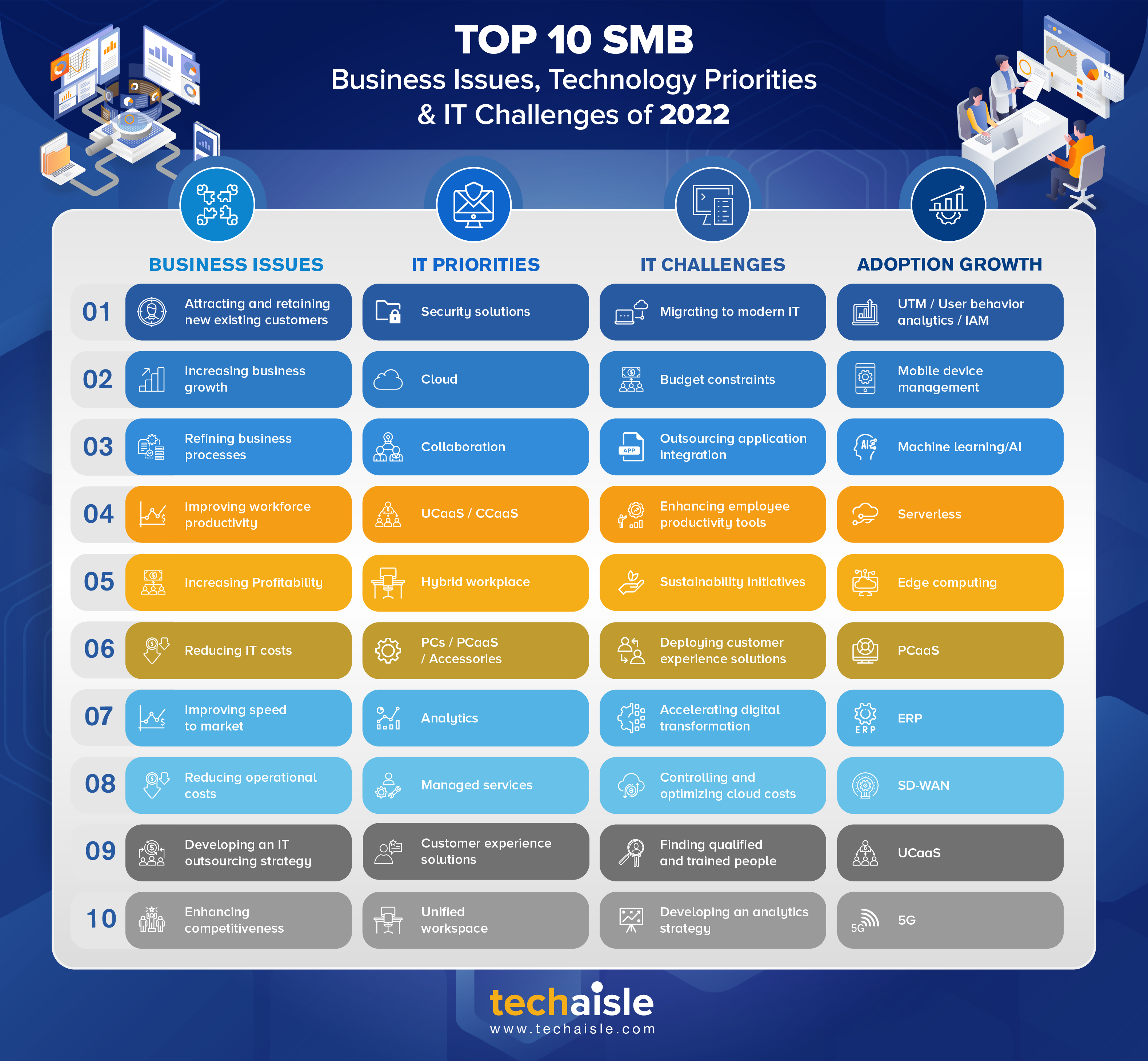Techaisle’s PC market study forecasts SMBs worldwide are likely to purchase 104.5 million PCs in 2022, a growth of 3.4 percent from 2021. The North American and Western Europe SMB PC shipment growth rates will likely be below 3 percent. 20-49 employee size segment will see a 3.9 percent growth rate, the highest among all employee sizes.
In 2022, SMBs are looking past the PC supply-chain challenges and focusing on improving employee experience, better security features offered by Windows 11, and accelerated move to cloud infrastructure requiring modern PCs. The transition to cloud infrastructure will also enable SMBs to utilize computing as a service rather than physical servers for their businesses, shifting spending from CAPEX to OPEX. The IT budget surplus will allow SMBs to purchase newer, more powerful PCs for further growth endeavors. In addition, SMBs prefer easier manageability, cost-effective provisioning, and simpler remote management to improve IT efficiency, available in Windows 11. Techaisle research data suggests that Windows 11 deployment momentum is building. Each of the above factors will drive SMB PC shipment and growth in 2022. PC is still the centerpiece of business productivity, and buying a new PC is likely to have a more significant impact on productivity than any other technology. Modern PCs promise to deliver more than an incremental improvement in performance and features, and even price-conscious small businesses benefit significantly from replacing older PCs with newer PCs.











